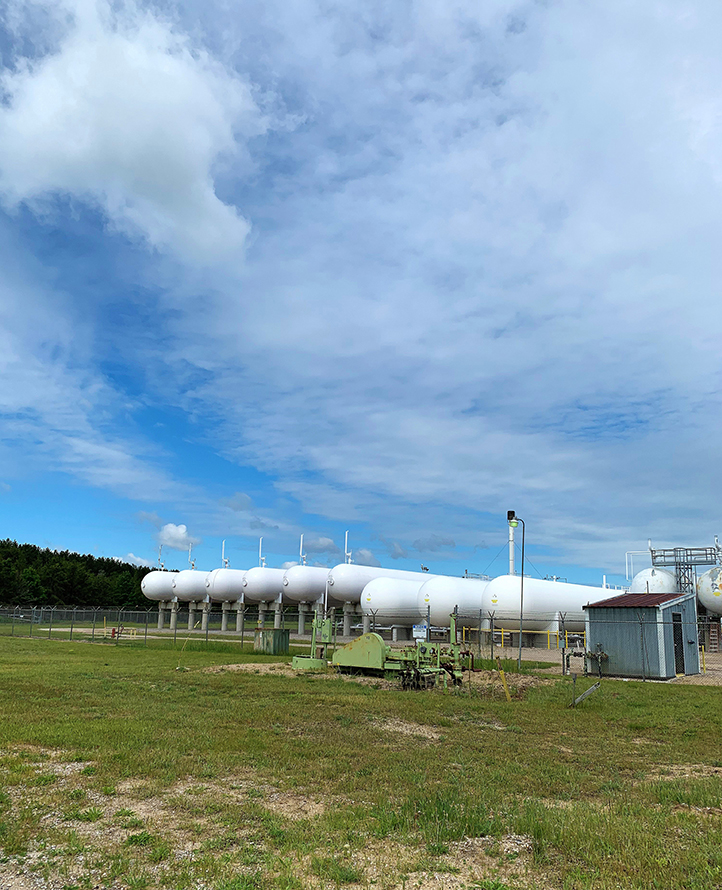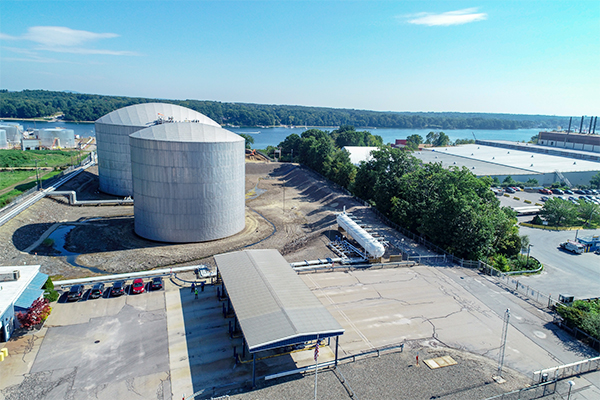Retail propane faces competition from export market
When JD Buss surveys the propane infrastructure landscape in the U.S., he considers how energy companies’ high-dollar investments have fueled propane’s flow out of the country – and what that means for propane retailer operations.

Silver Wolf Midstream entered the market with a focus on energy infrastructure. Photo by Niel Rootare
The retail propane community was once a prominent component of the overall domestic demand picture, but it has diminished in recent years compared to other demand options amid the nation’s propane supply boom, says Buss, a trading and risk management expert at Twin Feathers Consulting. Companies are drawn to exports’ more desirable distribution cycles, he adds.
Therefore, it’s incumbent on propane retailers to take the necessary steps to ensure supply reliability for their customers. In his conversations with clients, Buss conveys that retailers must determine the level of “insurance” required for the success of their businesses and act on those expectations – whether by acquiring more storage capacity or through additional transportation assets.
After all, retailers can’t sell the gas they don’t have on hand.
“There was a perception in prior decades that the supplier was responsible for storage,” Buss says. “My personal view, with the changes that have taken place over the last decade, if a retailer is wanting to continue to have stable supply for their consumers, they need to be responsible for the storage capacity.”
Mark Rachal of Cost Management Solutions (CMS) echoes Buss’ sentiment, noting how energy companies are also pushing new infrastructure projects to supply the petrochemical industry.
“As a propane retailer, you have to recognize that you’re going to be more responsible for making sure that you have supply to your customers,” says Rachal, director of research and publications for CMS. “There needs to be more focus on reliable supply from the retail side.”
U.S. propane exports averaged 1.2 million barrels per day (bpd) in the first half of 2020, a 17 percent increase from the same period in 2019, according to the U.S. Energy Information Administration. Based on what Jeff Thompson of Propane Resources sees happening in the market, the environment for propane retailers isn’t going to change anytime soon.
“The Chinese market is going to start heating up as we head into 2021,” says Thompson, a supply and risk management consultant, in an email to LP Gas. “More facilities and units in China are going to need NGLs. This will keep the U.S. export [market] robust.
“At the end of the day, it will be about availability and profitability,” he adds. “This should put the U.S. in the mix for a very active export market over the next few years. Looking at all the export facilities built or facilities fitted for export, there is no reason to believe that exports will be slowing down anytime soon.”
Drawing propane supply
Prominent propane export terminals have come online in the past couple of years, pulling product from domestic supply sources and lessening the surpluses that were once available to the retail market.
In the East, Energy Transfer’s Mariner East 2 pipeline launched in 2019 to serve as an outlet for Marcellus and Utica product exports from Marcus Hook, Pennsylvania. Ironically, Buss says, the efforts to bring the pipeline online in Pennsylvania were not made to benefit Keystone State retailers necessarily – but instead were designed to spur propane exports.
In the West, AltaGas’ Ridley Island Propane Export Terminal in Prince Rupert, British Columbia, Canada, went online in May 2019, serving as an exit route for Canadian product. The company, in a joint venture with Japan’s Idemitsu Kosan Co., recently assumed full ownership of Petrogas Energy. Petrogas had operated an LPG export facility located on the U.S. West Coast near Ferndale, Washington, about 100 miles north of Seattle.
In the South, the U.S. Gulf Coast continues to be a hotbed of activity. Oneok has provided more capacity to move Bakken barrels to the Gulf Coast, where Enterprise Products Partners has also invested in export and petrochemical projects.
Supporting the retailer

Blackline has developed infrastructure in New England tied to its Sea-3 businesses, designed to support the retail propane market. Photo courtesy of Nearview
Though the U.S. propane industry has borne witness to changes in the domestic supply and distribution scene, companies have stepped up in recent years to support the retail propane marketer with noted infrastructure developments.
Blackline Partners, with its Sea-3 businesses in New England, is one such company.
“We have to do our job right and make sure they’re in position to be successful; that’s how they’re going to grow,” says David Herr, vice president of supply and marketing for Blackline, speaking about the company’s propane retailer customers. “We’re not going to grow unless our customers grow. We work hand in hand with them.”
Blackline operates Sea-3 LLC in Newington, New Hampshire, and Sea-3 Providence in Providence, Rhode Island.
“We feel we’re a critical piece of the New England market with regard to propane,” says Herr, noting the lack of pipeline capacity in the region.
In the past several years, the company built a new 16-spot rail rack to go with its five truck-loading bays in Newington, and added 270,000 gallons of propane storage capacity (three 90,000-gallon tanks). It now has nearly 27 million gallons of storage at that facility.
Providence, which had been idle before Blackline brought it back online over one year ago, is smaller at 18 million gallons of storage capacity with three truck bays.
Both facilities, fully staffed and open year-round, have import and export capabilities. The flexible nature of the facilities also allows for refrigerated storage capacity and the ability to bring in millions of gallons of propane to meet domestic market demands.
“Our goal is to stay on the top sides of the tanks so we can absorb any supply outages or heating degree-day rushes on demand,” Herr says.
Other companies have taken steps recently to support the retail propane market, as well.
In the Midwest, threats by state policymakers to shut down Enbridge’s Line 5 pipeline in Michigan have motivated Silver Wolf Midstream to enter the market with a project that will repurpose an existing natural gas pipeline for propane distribution.
Despite the opposition, Enbridge continues to push forward with plans to construct and operate a tunnel underneath the Straits of Mackinac to house a replacement Line 5 pipeline. The company expects to begin construction in 2021 and place the new pipeline, responsible for over half of Michigan’s statewide propane needs, into service in 2024.
Enterprise has worked with the propane community to evaluate debottlenecking projects and uncover ways to get more product to market, says Tug Hanley, the company’s senior vice president of pipelines and terminals, during a National Propane Gas Association webinar this past summer.
Enterprise is planning to open a new propane terminal near El Paso, Texas, in the first quarter of 2021 with a capacity of about 15,000 bpd, the company says.
Propane retailers also continue to receive support from those companies in the industry that specialize in designing and building bulk storage and terminal projects.
















